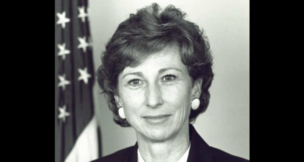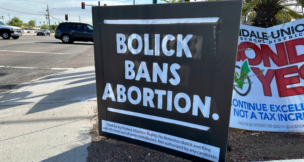CPS caseworker gives inside view of crisis
Gary Grado//December 13, 2013//[read_meter]
 Caseworkers quitting. Paperwork piling up. New complaints pouring in before old ones could even be examined.
Caseworkers quitting. Paperwork piling up. New complaints pouring in before old ones could even be examined.
That was what Sandra Lescoe experienced at Child Protective Services when she joined the Social Work Assessment SWAT team in 2011, a group of 15 highly experienced caseworkers formed for the short-term job of knocking down the mountain of work created by an exodus of workers.
She had seen many crises during her 18 years with the agency, but nothing like this.
Lescoe, who left CPS in July, said dealing with the thousands of cases piling up at CPS was much more difficult than people realize. No one ever intended to overlook cases where children’s lives could be in danger when SWAT decided certain reports weren’t worthy of investigation.
“It was not, ‘Let’s see how many cases we can get rid of,’ it was, ‘Let’s go out on the worst of the worst,’” said Lescoe, who gave the Arizona Capitol Times an exclusive inside look at how the crisis unfolded.
Making sure the reports met the required criteria was more complex than critics portray it to be, she said, and the practice was supposed to be used only on low-risk cases and for properly delegating manpower.
The Department of Economic Security, the umbrella agency of CPS, declined to make anyone available for an interview to respond to Lescoe’s version of events.
Department of Economic Security Director Clarence Carter announced Nov. 21 that SWAT and the Child Abuse Hotline Quality Assurance Unit closed out more than 6,000 reports since 2009 before they could be investigated. SWAT was responsible for the lion’s share of the reports until August, when the hotline unit took over the duty.
Arizona law requires all reports to be investigated.
The number of uninvestigated cases accelerated in 2011 when CPS workers kept walking out the door at a clip of 15 to 20 per month, leaving behind cases with no notes and very little done.
The number of those cases had reached 9,903 by the time Lescoe joined SWAT. On top of those cases were an additional 900 that still hadn’t been assigned to an investigator. Lescoe said SWAT didn’t want new reports to languish as they tackled the backlog, so they added another piece to the assessment process: setting certain low-risk allegations of neglect aside without any investigation.
SWAT eliminated both backlogs, but by classifying 6,554 reports as “NI,” or not investigated, the team created a new problem that has left the status of thousands of children unknown.
Lescoe, who was on the team for a few months, said she thinks CPS managers had to know what was going on because a manager would have had to authorize the use of the code in the CPS database.
Carter told The Arizona Republic he did not know about the NI classification until it was brought to his attention early last month by Det. Greg McKay, who heads the Office of Child Welfare Investigations, a DES agency that handles abuse allegations that could lead to criminal charges.
Carter subsequently put five supervisors on paid administrative leave. CPS has refused to confirm the names of the supervisors or to provide their personnel records.
Two of the suspended supervisors are Deborah Harper and Tracey Everitt. Harper earns $45.18 an hour while Everitt earns $36.16 an hour.
Lescoe said Harper put SWAT together in August 2011 to address the nearly 10,000 inactive cases, or ones that had no documentation, plus the 900 unassigned cases.
McKay has said in public testimony and in a memo to Gov. Jan Brewer that the NI process began in 2009 with 664 reports as a cost-saving measure, while in 2010 there were 123 such reports.
McKay said a directive issued on
Nov. 25, 2011, described the criteria necessary for the designation. The directive limited the use of NI to one week. (DES has yet to provide the directive after the Arizona Capitol Times made a Nov. 22 public records request.) “With the advent of SWAT and Deborah Harper’s ascension to Program Administrator, this practice became an acceptable measure to prevent newly created reports from being investigated,” McKay wrote.
Lescoe said she doesn’t recall seeing a written directive, but she remembers talking about the criteria for an NI in meetings.
Roughly 5,000 cases got the designation from December 2012 until Carter stopped its use last month.
Lescoe defended the practice, saying reports weren’t disregarded without being assessed.
“It was an alternative to having cases keep backing up and backing up and backing up,” she said.
Lescoe said SWAT would tackle the two backlogs on weekdays and new low-risk reports on Saturdays, printing off lists of them and reading them all.
She said using the designation was very restricted. Two people had to agree on the decision and only a handful of workers could input the information. They had to use a specific computer.
In testimony before the CPS Oversight Committee on Nov. 21, McKay said the handful of cases he had read at the time did not meet the criteria set for the designation. For instance, reports involving children with previous reports to CPS didn’t meet the criteria, but there were many uninvestigated reports involving children who had been the subject of prior reports.
McKay said what he found in his sample of reports was “staggering” and nothing was “off limits” in the process.
“This needs to stop IMMEDIATELY!” McKay wrote in a Nov. 12 letter to Brewer. He said one of the implications of the process is “one of failed child safety and protection multiplied by 5,000.”
Lescoe said the analysis of reports isn’t as simple as McKay makes it sound. For example, she said a previous report doesn’t automatically disqualify a report from an NI because the credibility of the source has to be considered.
“You don’t have a crystal ball, you’re just trying to make the best educated decision based on your experience and information you had,” Lescoe said.
After Carter stopped the process, CPS and the Office of Child Welfare Investigations sprang into action to re-examine 6,554 reports that were never investigated.
An around-the-clock review determined 3,635 of the cases required an investigation and 14 of them required a rush response.
Brewer on Dec. 2 appointed the Child Advocate Response Examination, or CARE team, to give CPS’ review a second look and come up with recommendations for preventing such a crisis from happening again. CARE as of Dec. 11 verified that 194 children have been seen and 1,262 reports have been assigned to an investigator.
“There was no malice, no deception,” Lescoe said.

















